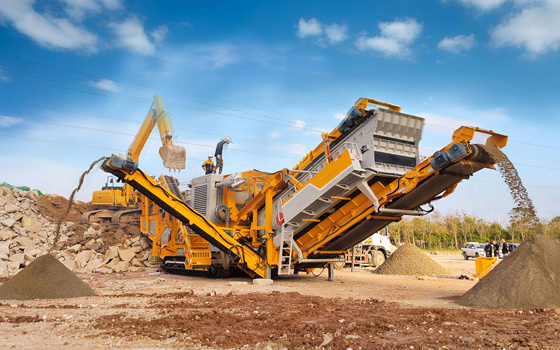Understanding Ball Mill Liners: Essential Components for Optimal Grinding Performance
Release Time:
2025-07-15
Author:
Source:
Ball mill liners play a crucial role in the performance and efficiency of ball mills, which are widely used in various industries for grinding materials such as ores, chemicals, and cement. These liners are protective coverings that line the interior of the mill, providing several key functions that are vital for achieving optimal grinding outcomes. One of the primary purposes of ball mill liners
Ball mill liners play a crucial role in the performance and efficiency of ball mills, which are widely used in various industries for grinding materials such as ores, chemicals, and cement. These liners are protective coverings that line the interior of the mill, providing several key functions that are vital for achieving optimal grinding outcomes.
One of the primary purposes of ball mill liners is to protect the shell of the mill from wear and tear. The grinding process involves the constant impact and abrasion of grinding media and the material being processed. Without adequate liners, the shell would quickly deteriorate, resulting in costly repairs and downtime. Therefore, selecting the right liner material is essential to extend the lifespan of the mill and enhance its operational reliability.
Different types of materials can be used for ball mill liners, each offering unique properties suited for varying applications. Common materials include rubber, steel, and composite options. Rubber liners are known for their excellent wear resistance and noise dampening capabilities, making them suitable for certain applications where noise reduction is beneficial. Steel liners, on the other hand, provide higher durability and strength, which is advantageous for handling heavier grinding media and more abrasive materials. Composite liners combine the best features of both materials, offering a balanced solution that can optimize performance.
Another significant function of ball mill liners is to facilitate the grinding process itself. The design of the liner can affect the movement of the grinding media and the material within the mill, influencing the efficiency of the grinding operation. Properly designed liners can enhance the cascading action of the balls, leading to better material breakdown and improved energy transfer. As a result, understanding the design principles of ball mill liners can help operators achieve more efficient grinding cycles.
Maintenance of ball mill liners is also a critical aspect of ensuring optimal performance. Regular inspections are necessary to identify wear patterns and schedule replacements before significant damage occurs. Operators should also be aware of the impact of liner wear on the grinding process; as liners wear down, the grinding efficiency can decrease, leading to higher energy consumption and longer processing times.
In conclusion, ball mill liners are integral components of ball mills that significantly impact their performance and efficiency. By selecting the appropriate liner materials and designs, and maintaining them effectively, operators can enhance their grinding operations, reduce downtime, and ultimately improve productivity in their manufacturing processes. Understanding the role of ball mill liners is essential for anyone involved in the manufacturing and processing machinery sector, particularly within crushing and sorting applications.
One of the primary purposes of ball mill liners is to protect the shell of the mill from wear and tear. The grinding process involves the constant impact and abrasion of grinding media and the material being processed. Without adequate liners, the shell would quickly deteriorate, resulting in costly repairs and downtime. Therefore, selecting the right liner material is essential to extend the lifespan of the mill and enhance its operational reliability.
Different types of materials can be used for ball mill liners, each offering unique properties suited for varying applications. Common materials include rubber, steel, and composite options. Rubber liners are known for their excellent wear resistance and noise dampening capabilities, making them suitable for certain applications where noise reduction is beneficial. Steel liners, on the other hand, provide higher durability and strength, which is advantageous for handling heavier grinding media and more abrasive materials. Composite liners combine the best features of both materials, offering a balanced solution that can optimize performance.
Another significant function of ball mill liners is to facilitate the grinding process itself. The design of the liner can affect the movement of the grinding media and the material within the mill, influencing the efficiency of the grinding operation. Properly designed liners can enhance the cascading action of the balls, leading to better material breakdown and improved energy transfer. As a result, understanding the design principles of ball mill liners can help operators achieve more efficient grinding cycles.
Maintenance of ball mill liners is also a critical aspect of ensuring optimal performance. Regular inspections are necessary to identify wear patterns and schedule replacements before significant damage occurs. Operators should also be aware of the impact of liner wear on the grinding process; as liners wear down, the grinding efficiency can decrease, leading to higher energy consumption and longer processing times.
In conclusion, ball mill liners are integral components of ball mills that significantly impact their performance and efficiency. By selecting the appropriate liner materials and designs, and maintaining them effectively, operators can enhance their grinding operations, reduce downtime, and ultimately improve productivity in their manufacturing processes. Understanding the role of ball mill liners is essential for anyone involved in the manufacturing and processing machinery sector, particularly within crushing and sorting applications.
Keywords:
Jaw crusher parts | Shredder parts | Cone crusher Parts | Ball mill parts
Previous page
Previous page:
Related News
Business License









